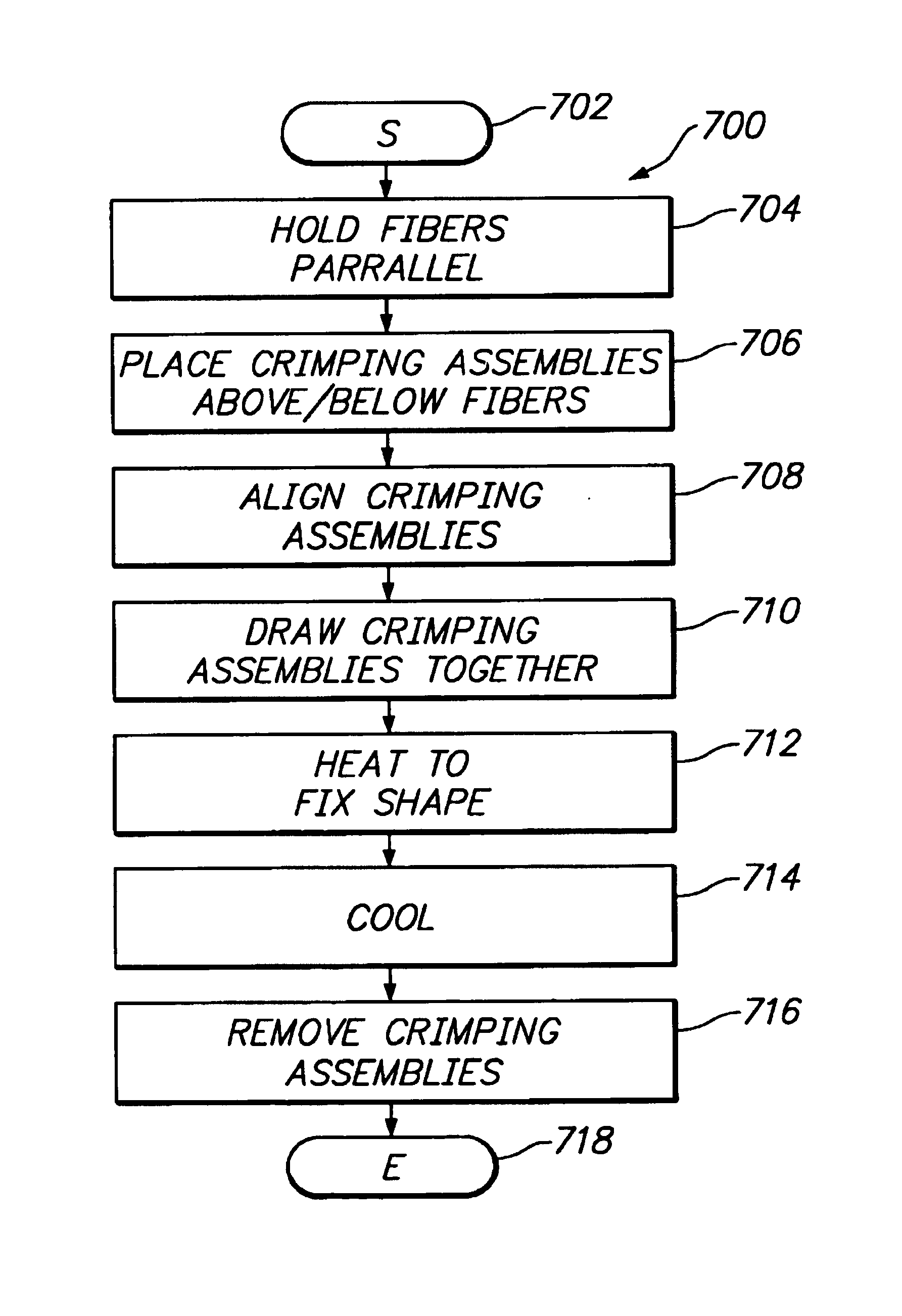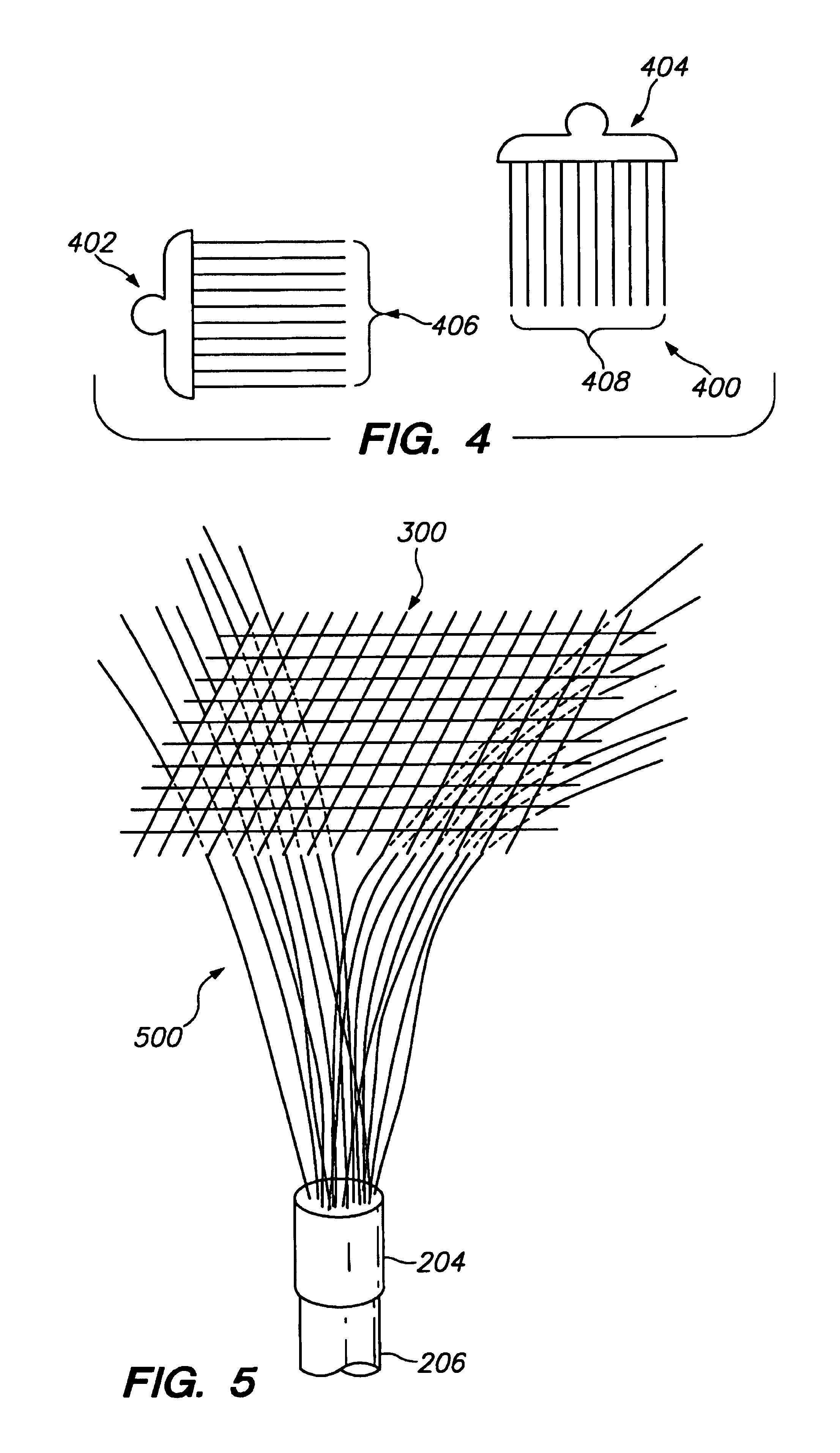Method of selectively shaping hollow fibers of heat exchange catheter
a technology of heat exchange catheter and hollow fiber, which is applied in the field of catheters, can solve the problems of excessive stretching or shearing of fibers, and achieve the effects of improving efficiency, encouraging fiber spreading, and thoroughly separated
- Summary
- Abstract
- Description
- Claims
- Application Information
AI Technical Summary
Benefits of technology
Problems solved by technology
Method used
Image
Examples
Embodiment Construction
[0032]The nature, objectives, and advantages of the invention will become more apparent to those skilled in the art after considering the following detailed description in connection with the accompanying drawings. As mentioned above, the invention concerns techniques for selectively shaping hollow fibers designed to exchange heat or materials with body fluids / tissue. As examples, hollow fibers are discussed herein, even though the fiber shaping techniques of this invention are similarly applicable to solid fibers. These techniques may be applied to introduce divergence among fibers in a bundle as the fibers exit a common point of attachment, or alternatively to introduce a selected longitudinal oscillation into the fibers.
Fiber Splaying
INTRODUCTION
[0033]FIG. 1 shows a sequence 100 to illustrate one example of the method aspect of the present invention. For ease of explanation, but without any intended limitation, the example of FIG. 1 is described in the context of various hardware...
PUM
| Property | Measurement | Unit |
|---|---|---|
| angle | aaaaa | aaaaa |
| angle | aaaaa | aaaaa |
| angle | aaaaa | aaaaa |
Abstract
Description
Claims
Application Information
 Login to View More
Login to View More - Generate Ideas
- Intellectual Property
- Life Sciences
- Materials
- Tech Scout
- Unparalleled Data Quality
- Higher Quality Content
- 60% Fewer Hallucinations
Browse by: Latest US Patents, China's latest patents, Technical Efficacy Thesaurus, Application Domain, Technology Topic, Popular Technical Reports.
© 2025 PatSnap. All rights reserved.Legal|Privacy policy|Modern Slavery Act Transparency Statement|Sitemap|About US| Contact US: help@patsnap.com



